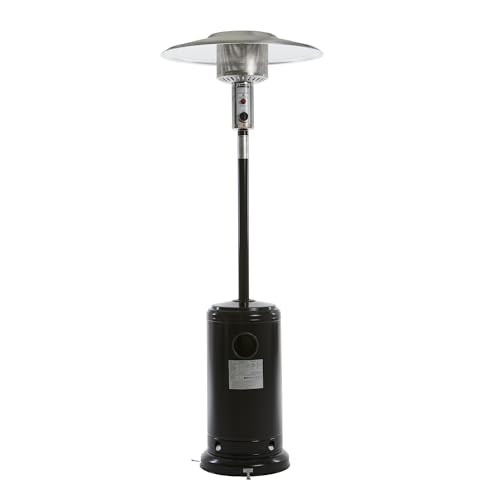The Buy Outdoor Patio Heaters Case Study You'll Never Forget
Guide to Buying Outdoor Patio Heaters: Everything You Need to Know
As the cool evenings of fall and winter method, many homeowners and dining establishment owners are on the lookout for ways to extend their outdoor enjoyment. Outdoor patio heaters offer a comfortable and inviting environment, making them important for alfresco dining, barbecues, or simply delighting in a peaceful night outside. This guide aims to offer a detailed summary of outdoor patio heaters, consisting of the types offered, key functions to consider, suggestions for buying, and answers to frequently asked questions.
Types of Outdoor Patio Heaters
Patio heaters are created in different styles and innovations to satisfy varied requirements. Here's an introduction of the most typical types:
Heater Type
Description
Pros
Cons
Propane Heaters
Make use of liquid propane gas for heating, typically portable with wheels for simple mobility.
Portable, high heat output.
Minimal run time; needs propane refills.
Natural Gas Heaters
Connect directly to a gas line, offering constant heat without the requirement for refills.
Convenient and cost-effective in the long term.
Permanently set up; less versatile.
Electric Heaters
Use electricity to produce heat, often in a streamlined, modern design.
Easy to utilize; no emissions or fumes.
Higher energy expenses; restricted heat range.
Infrared Heaters
Usage infrared innovation to directly heat up items and individuals rather of the surrounding air.
Efficient and immediate warmth.
Limited range; needs electricity.
Tabletop Heaters
Smaller sized, portable heaters designed to sit on tables for intimate seating plans.
Space-saving; stylish options available.
Restricted heating capability compared to larger models.
Key Features to Consider
When picking an outdoor patio heater, it's important to examine numerous functions to ensure you make a notified choice. Here are some important aspects to consider:
Heat Output: Measured in BTUs (British Thermal Units), a greater BTU score suggests more heat output. For a comfortable outdoor experience, look for heaters using between 30,000 to 50,000 BTUs.
Size and Capacity: The size of the heater need to be in proportion to the space readily available for heating. Consider Heating Equipment and the variety of people you expect to amuse.
Material: Patio heaters are typically made from stainless-steel, aluminum, or copper. Stainless-steel is robust and resistant to the components, which is perfect for outdoor usage.
Design: Choose a design that matches your outdoor design. There are numerous designs, including freestanding, wall-mounted, and tabletop options. Consider what fits best in your space.
Security Features: Look for designs with safety features, such as an automated shut-off switch, anti-tilt protection, and heat-resistant products. This guarantees the safety of your household and visitors.
Portability: If you plan to move your heater often, select a portable model with wheels or a light-weight style.
Fuel Type: Different fuel types supply distinct benefits. While propane heaters are portable, gas heaters provide a more affordable long-lasting heating option if a connection is offered.
Buying Tips
To maximize your investment in an outdoor patio heater, consider these pointers while shopping:
Set a Budget: Determine your budget before searching. Rates differ substantially depending on size and features.
Check out Reviews: Look for customer reviews online to evaluate performance and reliability.
Store Seasonally: Prices might drop throughout off-seasons, making it the ideal time to score a deal.
Buy Only When Necessary: Assess your heating needs occasionally. If you seldom use the outdoor space during cooler months, prioritize quality over quantity.
Think About Warranty and Support: Check for guarantee policies and consumer assistance. A good service warranty can offer peace of mind.
Frequently Asked Questions (FAQs)
1. For how long does a propane tank last in an outdoor heater?
The runtime of a propane tank differs depending on the BTU output of the heater. Usually, a standard 20 pound propane tank can last anywhere from 8 to 12 hours, depending on the heat setting.
2. Can I utilize an outdoor patio heater inside your home?
No, outdoor patio heaters are not designed for indoor use due to the threat of carbon monoxide poisoning and combustion risks. Always utilize heaters in well-ventilated locations.
3. Do outdoor heaters work in windy conditions?
Some outdoor heaters may have a hard time to preserve heat in windy conditions, specifically those designed to radiate heat into the surrounding air instead of straight heating objects. Nevertheless, wind-resistant designs do exist.
4. What upkeep does an outdoor patio heater require?
Regular maintenance includes cleaning the heater after use, checking for gas leakages (if relevant), ensuring all connections are protected, and saving the heater throughout harsh weather.
5. Is it safe to leave an outdoor heater unattended?
No, it is not a good idea to leave outdoor heaters ignored, particularly those using open flame. Constantly shut off heaters when not in use, and guarantee kids and animals are kept at a safe distance.
Outdoor patio heaters are an important addition to any outdoor space, making it possible for homeowners and organizations to delight in the fresh air even when temperature levels drop. Comprehending the various types of heaters, crucial features, and useful buying pointers will empower consumers to pick the perfect unit that satisfies their specific requirements. By considering safety, upkeep, and the environment you want to develop, you can improve your outdoor living experience for many years to come.
